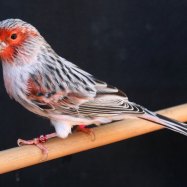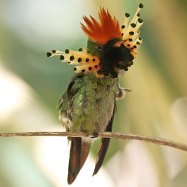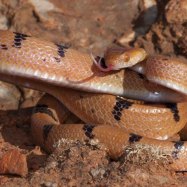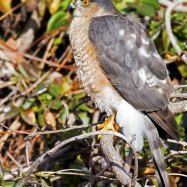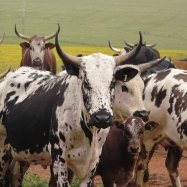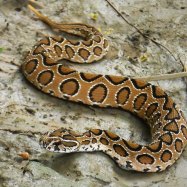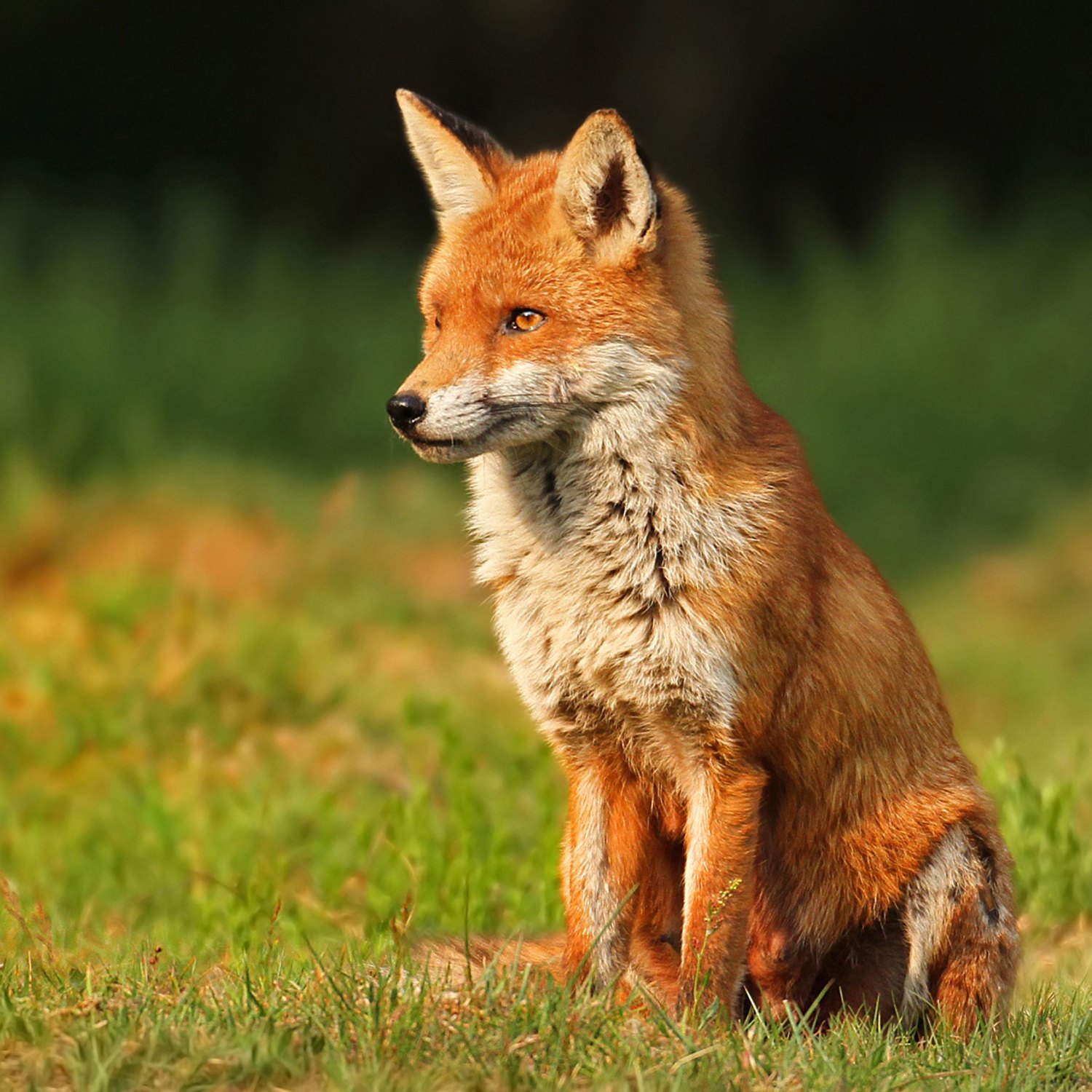
Red Fox
Up to 2.5 feet (including the tail)
The red fox is a medium-sized animal that belongs to the Canidae family. It has a slender body and a long bushy tail that can grow up to 2.5 feet in length. This beautiful creature can be found in various countries around the world, making it a common sight for many. With its distinct appearance and cunning behavior, the red fox has captured the hearts of many animal enthusiasts. Have you ever encountered one of these fascinating creatures? Share your experience with us in the comments section below! #redfox #canidae #wildlife
Animal Details Summary:
Common Name: Red Fox
Kingdom: Animalia
Habitat: Grasslands, forests, mountains, deserts, and urban areas
The Fascinating Red Fox: A Versatile and Adaptable Canine
Have you ever come across a stunning animal with vibrant red fur roaming through the grasslands or forests? Chances are, you have encountered a Red Fox, also known by its scientific name, Vulpes vulpes. These stunning creatures are found in a variety of habitats, from urban areas to deserts, making them one of the most adaptable canines in the animal kingdom.But beyond their striking appearance, Red Foxes have many other fascinating characteristics that make them stand out in the animal world. Join us as we embark on an informative journey to explore the mesmerizing traits of the Red Fox Red Fox.
The Taxonomy of Red Fox
As the name suggests, the Red Fox belongs to the Canidae family, which includes other canines such as wolves, coyotes, and domestic dogs. Its scientific name, Vulpes vulpes, is derived from the Latin word "vulpes," meaning "fox," and the word "vulpin," meaning "like a fox."The Red Fox is classified under the Kingdom Animalia, the Phylum Chordata, and the Class Mammalia, placing it in the same category as other mammals such as bears, elephants, and dolphins. In the order Carnivora, the Red Fox shares its place with other carnivorous animals such as lions, tigers, and hyenas.
Habitat and Distribution
One of the most remarkable traits of the Red Fox is its ability to thrive in a variety of habitats. These adaptable creatures can be found in grasslands, forests, mountains, deserts, and even urban areas. This versatility has allowed them to spread across the world, making them one of the widest distributed carnivorous mammals.Red Foxes are found in many countries worldwide, including North America, Europe, Asia, and North Africa. However, they are not native to all these regions Red Tailed Cuckoo Bumblebee. The Red Fox is native to Eurasia, but it has been introduced to other countries, such as the United States, where it is now considered an invasive species.
Feeding Habits of the Red Fox
Red Foxes are omnivorous, meaning they have a diverse diet that consists of both plants and animals. They are opportunistic hunters and scavengers, and their diet varies depending on their habitat and the food availability.In the wild, Red Foxes primarily prey on small mammals such as mice, rabbits, and squirrels. However, they are also known to hunt larger animals such as deer and sheep in some regions. They are also skilled hunters and can catch birds, reptiles, and insects. Additionally, Red Foxes are known to consume fruits, berries, and even human garbage in urban areas, making them adaptable and resourceful in their search for food.
Physical Characteristics of the Red Fox
The Red Fox is a medium-sized mammal with a slender body and a long bushy tail, making it a visually appealing animal. Its body shape and size can vary depending on its habitat, with Red Foxes living in colder regions sporting a thicker and fluffier coat.One of the most striking features of the Red Fox is its beautiful reddish-brown to orange-red fur, which gives it its name and makes it stand out among other canines. However, it is worth noting that not all Red Foxes have red fur. Some individuals have silver or black fur, and their coat may change color with the seasons.
The Red Fox has a white underbelly and a characteristic white-tip on its tail, which makes it easily identifiable. Its ears are pointed and triangular, and the tip of its nose and lower legs are also often white.
On average, the Red Fox can grow up to 2.5 feet in length, including the tail, and can weigh up to 15 pounds. Females, also known as vixens, are slightly smaller than males, also known as reynards.
Behavior and Social Structure
Red Foxes are generally solitary animals, living and hunting alone, except during the breeding season. They are most active at dawn and dusk, making them crepuscular animals. However, they can also be nocturnal, especially in urban areas where they avoid human activity.Despite their solitary nature, Red Foxes do communicate through vocal and non-vocal methods. They use a variety of sounds, including barks, howls, and yelps, to communicate with other foxes and mark their territory. They also have a developed sense of smell, which they use to identify and track prey or communicate with other foxes.
Reproduction and Family Structure
Red Foxes have a well-developed social and family structure, with a dominant male and female leading a group of foxes. This family structure is also known as a "skulk" or "leash" of foxes.During the breeding season, which runs from December to April, a male fox will mate with a female fox, and they will subsequently raise their cubs together. The gestation period for Red Foxes is approximately 53 days, and a vixen can give birth to a litter of 1-10 cubs.
Red Fox cubs are born blind, deaf, and reliant on their parents for the first few weeks. As they grow, their parents will teach them how to hunt and survive in their environment. After six months, the cubs will leave their parents' den and become independent, setting off to establish their territory.
Conservation and Threats
One of the threats to the Red Fox is hunting, both for sport and for its fur. While some countries have put regulations in place to control hunting, in others, Red Foxes are hunted for their pelts, which are then used for fur coats and other fashion items.Another potential threat to Red Foxes is habitat loss due to human activities such as urbanization, deforestation, and agricultural expansion. This loss of habitat can also lead to increased competition among foxes, as well as an increase in human and animal conflicts.
The Red Fox in Culture and Mythology
For centuries, Red Foxes have been an integral part of various cultures and societies worldwide. In many Native American tribes, the Red Fox is considered a messenger between humans and the spirit world, and it is often seen as a symbol of intelligence and cunningness.In Japanese culture, the Red Fox, known as Kitsune, is believed to have supernatural powers and magical abilities. It is also a popular character in anime and manga, depicting its intelligence and shape-shifting abilities.
In European folklore, the Red Fox is often portrayed as a trickster and cunning animal, outsmarting humans and other animals. It is also associated with the duality of good and evil, oftentimes representing both qualities in its actions.
Wrapping Up
The Red Fox is a fascinating and versatile animal that continues to captivate people of all ages. From its striking appearance to its adaptable nature and social structure, there is much to learn and appreciate about this captivating creature.With its widespread distribution and ability to thrive in various habitats, the Red Fox is truly a remarkable and resilient species. However, it is crucial to ensure its protection and conservation, as its population is threatened by human activities and conflicts.
So, the next time you come across a beautiful Red Fox, take a moment to appreciate its unique characteristics and its importance in our natural world.

Red Fox
Animal Details Red Fox - Scientific Name: Vulpes vulpes
- Category: Animals R
- Scientific Name: Vulpes vulpes
- Common Name: Red Fox
- Kingdom: Animalia
- Phylum: Chordata
- Class: Mammalia
- Order: Carnivora
- Family: Canidae
- Habitat: Grasslands, forests, mountains, deserts, and urban areas
- Feeding Method: Omnivorous
- Geographical Distribution: North America, Europe, Asia, and North Africa
- Country of Origin: Red Fox is native to Eurasia
- Location: Red Fox is found in many countries across the world
- Animal Coloration: Reddish-brown to orange-red fur with a white underbelly
- Body Shape: Medium-sized with a slender body and a long bushy tail
- Length: Up to 2.5 feet (including the tail)
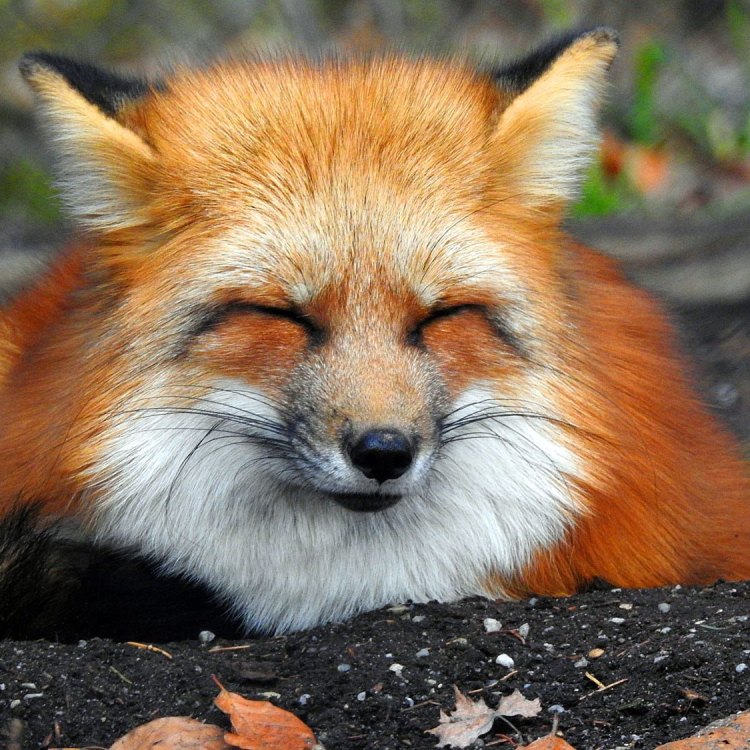
Red Fox
- Adult Size: Average weight is 10-15 pounds
- Average Lifespan: 2-5 years in the wild, up to 10 years in captivity
- Reproduction: Sexual
- Reproductive Behavior: Mating occurs in winter, and the female gives birth to a litter of 3-6 kits
- Sound or Call: They make a variety of vocalizations, including barks, screams, and howls
- Migration Pattern: Non-migratory
- Social Groups: Mostly solitary, but form small family groups
- Behavior: Nocturnal, highly adaptable, and excellent hunters
- Threats: Habitat loss, hunting, and diseases
- Conservation Status: Least Concern
- Impact on Ecosystem: Important prey species for many predators
- Human Use: Hunted for fur and as game animals
- Distinctive Features: Large triangular ears and a long bushy tail
- Interesting Facts: Red foxes are able to adapt to various environments and can live in close proximity to humans
- Predator: Humans, wolves, and large birds of prey
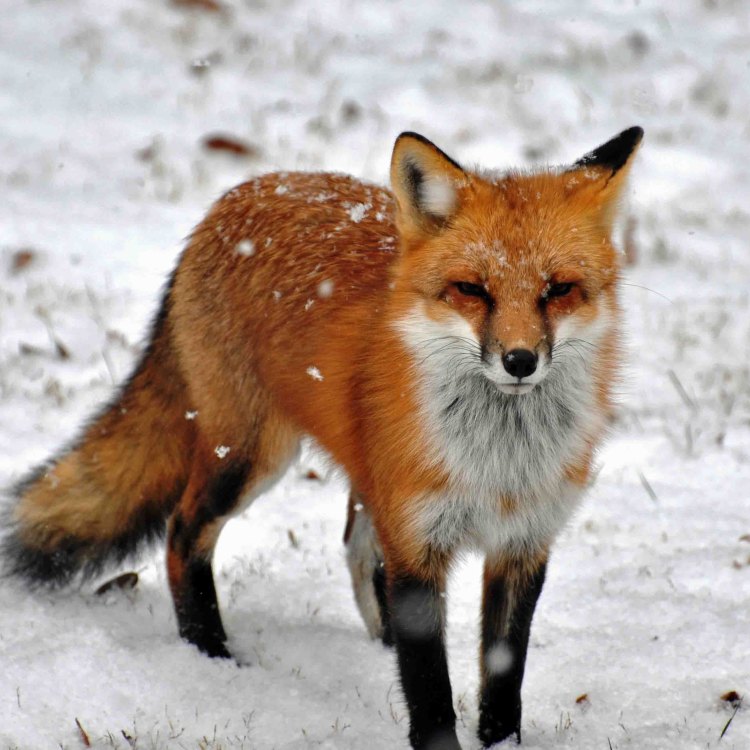
Vulpes vulpes
The Fascinating Red Fox: Adaptable Hunters of the Wild
When one thinks of a fox, images of a cunning, sly creature often come to mind. But there's one species of fox that not only possesses intelligence but also the ability to adapt to various environments and thrive in the wild - the Red Fox.Red foxes (scientific name Vulpes vulpes) are a type of wild canid. They are widely distributed across the Northern Hemisphere, with their range extending from Europe and Asia to North Africa and North America PeaceOfAnimals.Com. These small, bushy-tailed creatures have captured the attention and admiration of people worldwide with their distinctive features, intriguing behavior, and vital role in the ecosystem.
In this article, we will delve into the world of the Red Fox, exploring its physical characteristics, behaviors, importance in the ecosystem, and relationship with humans. So, let's grab our binoculars and go on a journey to discover the fascinating world of the Red Fox.
The Physical Characteristics of the Red Fox
The Red Fox is a medium-sized mammal, with an average weight of 10-15 pounds. They have long, slender bodies with reddish-brown fur covering their back, sides, and head, while their belly, chest, and throat are white. Their legs, ears, and paws are black, and they have a distinctive white-tipped tail.One of the most prominent features of the Red Fox is its large triangular ears, which allow them to have excellent hearing. They also have wide, bushy tails that serve multiple purposes. Not only does the tail act as a balancing tool, but it also keeps the fox warm during cold winters Ringed Kingfisher. Moreover, the Red Fox is known for its striking bright golden eyes that can reflect light, aiding them in nocturnal activities.
The Reproductive Cycle of the Red Fox
Red foxes are sexually reproductive animals, with a breeding season that occurs between December and January. During this time, the males, known as dogs, become active and start marking their territory with urine and feces to attract a mate. The females, known as vixens, are fertile only for a short period, lasting about 3-5 days, and the mating pair may stay together for several days.After a gestation period of 52 days, the female gives birth to a litter of 3-6 kits, usually in an underground burrow or a den. The vixen is the sole caregiver for the kits, and the dog's role ends at mating. The kits are born blind, with dark fur and closed eyes. They rely on their mother's milk for the first month and then start eating solid food brought by their mother.
The Adaptable and Resourceful Behavior of the Red Fox
Red foxes are truly extraordinary animals when it comes to their behavior. They are highly adaptive animals, capable of surviving in a range of habitats, including forests, deserts, mountains, and even urban areas. They are active mostly at night, making them nocturnal creatures, but they can be seen during the day as well.These cunning hunters have a diverse diet, feeding on small mammals, insects, birds, and even fruits and vegetables. They have been known to hunt in different ways, from stalking their prey to ambushing it. Interestingly, the Red Fox also has a unique hunting behavior where it will 'milkshake' its prey, which involves repeatedly biting and shaking it until it becomes paralyzed.
Moreover, Red foxes are also known for their vocalizations, which vary depending on the situation. They make a variety of sounds, including barks, screams, and howls, to communicate with other foxes and to signal danger.
The Red Fox's Vital Role in the Ecosystem
Red foxes may be small creatures, but they play a significant role in their ecosystem. They are considered an important prey species for many predators, including coyotes, wolves, and large birds of prey. As predators themselves, they help regulate the population of their prey, ultimately contributing to a healthy ecosystem.Moreover, the burrows created by Red Foxes also serve as habitats for many other animals, such as smaller mammals and reptiles. They also play a crucial role in seed dispersal, aiding in plant growth and biodiversity.
The Human and Red Fox Relationship
Red foxes have long been associated with humans, and their relationship has been a complex one. They have been hunted for centuries for their fur, which has been highly prized for its warmth and beauty. However, with the rise of animal rights movements, the fur trade has significantly declined, and the Red Fox is now protected in many countries.On the other hand, Red foxes are also seen as nuisance animals by some due to their tendency to prey on valuable livestock. This has led to many foxes being killed by farmers trying to protect their livestock. However, recent studies have shown that this is not a significant problem, and only a small percentage of a fox's diet consists of livestock. In fact, the presence of Red foxes can even benefit farmers as they help control rodent populations.
Additionally, Red foxes have also adapted to living in close proximity to humans, with many urban areas now being home to these creatures. They have been observed scavenging for food in bins and even befriending humans in some cases.
The Conservation Status of the Red Fox
The Red Fox is currently listed as Least Concern on the International Union for Conservation of Nature (IUCN) Red List, which means that they are not considered to be in danger of extinction. However, they are still faced with threats such as habitat loss and hunting, which can have a severe impact on their populations.Habitat loss is one of the primary threats to Red foxes. Urbanization and agricultural activities have resulted in the destruction of their natural habitats, leaving them with fewer places to live and breed. This also leads to fragmentation of their populations, making it difficult for them to find suitable mates and resulting in lower genetic diversity.
Moreover, Red foxes are still hunted in some areas for their fur and as game animals. It is important to control hunting and trapping practices to ensure the survival and conservation of these magnificent creatures.
Interesting Facts about Red Foxes
Here are some interesting facts about Red foxes that highlight their remarkable abilities and unique traits:- Red foxes have a special layer of fat on their bodies called 'cryptobiosis,' which allows them to withstand extremely cold temperatures.
- Their hearing is so advanced that they can detect underground prey, such as rodents, from up to 2 feet away.
- Red foxes have a scent gland on their tails, which they use to mark their territory and communicate with other foxes.
- They have an excellent sense of smell, which they use to find food and locate their burrows.
- Red foxes can run at speeds of up to 45 miles per hour, making them one of the fastest animals in their size range.
Predators of the Red Fox
While Red foxes are skilled hunters, they also have their fair share of predators. Humans, with their habitat destruction and hunting practices, pose a significant threat to Red fox populations. In addition, wolves, coyotes, mountain lions, and large birds of prey such as eagles and owls can also prey on Red foxes.However, despite having predators, Red foxes have evolved to be highly adaptable and resilient, allowing them to thrive in the wild.
The Red Fox: Important Members of the Canid Family
In conclusion, the Red fox is a fascinating and vital species that deserves recognition and protection. With their striking features, remarkable behaviors, and vital role in the ecosystem, they have captured the hearts and minds of many.As we continue to expand our human reach and encroach on their habitats, it is essential to remember the importance of preserving and conserving these creatures. The Red fox may be small, but their impact on the ecosystem is significant, and through efforts to protect them, we can ensure their survival for generations to come. So, let's appreciate and admire these adaptable hunters of the wild, the Red fox.
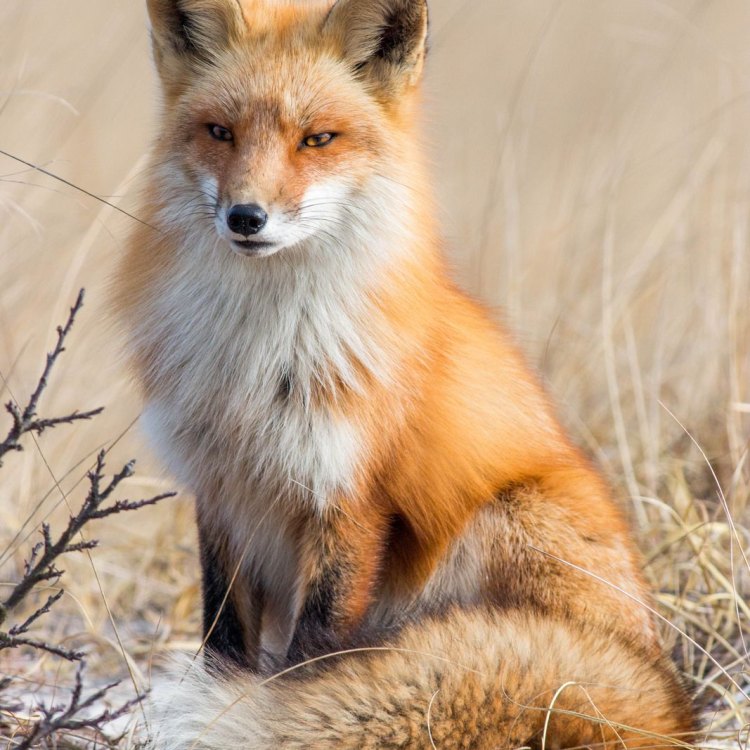
The Fascinating Red Fox: A Versatile and Adaptable Canine
Disclaimer: The content provided is for informational purposes only. We cannot guarantee the accuracy of the information on this page 100%. All information provided here may change without prior notice.



